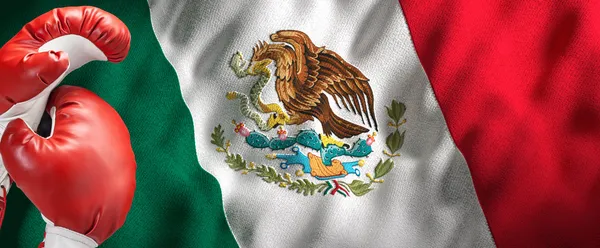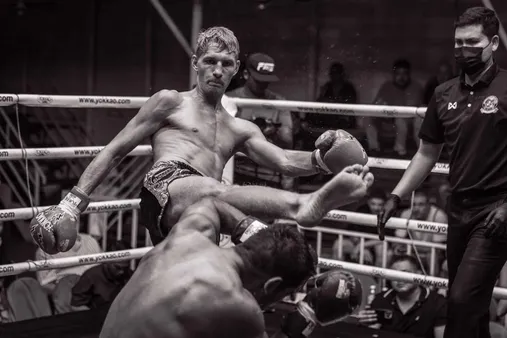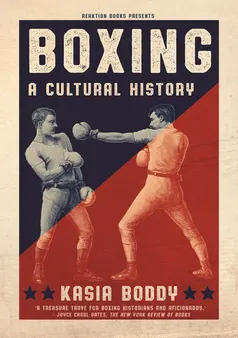Table of Contents
Welcome to Kizworld's exploration of the captivating world of boxing, a sport that has enthralled audiences for millennia. From its ancient origins in Greece and Rome to its modern-day status as a global phenomenon, boxing boasts a rich history and culture that continues to inspire and entertain. In this comprehensive guide, we delve into The history and culture of boxing, examining the techniques that make it a challenging and rewarding sport, and introducing you to the greatest boxers of all time. Discover the cultural impact of boxing and its enduring legacy as a sport that tests the limits of human endurance and determination.
The History and Culture of Boxing: A Journey Through the Ages
I. The History of Boxing: From Ancient Civilizations to the Modern Era
The History of Boxing: From Ancient Civilizations to the Modern Era
Ancient Origins
The history of boxing dates back to ancient civilizations, with evidence of the sport being practiced in Egypt, Greece, and Rome. In ancient Egypt, boxing was often depicted in hieroglyphics and was considered a form of entertainment for the pharaohs. In ancient Greece, boxing was practiced as part of the Olympic Games and was considered a test of strength and courage. In ancient Rome, boxing was often used as a form of gladiatorial combat, with fighters using their fists wrapped in leather straps to inflict damage on their opponents.
Boxing in the Ancient Olympics
Boxing was one of the most popular sports in the ancient Olympic Games, with the first recorded boxing match taking place in 688 BC. The sport was originally practiced with bare knuckles, but later on, leather straps were used to protect the fighters' hands. Boxing matches were often brutal and could last for several hours, with the winner being the first fighter to knock out their opponent or force them to surrender.
The Rise of Professional Boxing
Professional boxing began to emerge in the 19th century, with the first professional boxing match taking place in England in 1810. The sport quickly gained popularity and spread to other countries, with the first world championship fight being held in 1882. The early days of professional boxing were often chaotic and unregulated, with fights often taking place in bars and taverns. However, as the sport grew in popularity, it became more organized and rules and regulations were put in place.
The Golden Age of Boxing
The Golden Age of Boxing is generally considered to be the period from the 1920s to the 1950s. During this time, boxing was hugely popular and some of the greatest boxers of all time, such as Joe Louis, Sugar Ray Robinson, and Muhammad Ali, emerged.
The Modern Era of Boxing
The modern era of boxing began in the 1960s and continues to the present day. During this time, the sport has seen a number of changes, including the introduction of new weight classes, the use of gloves, and the establishment of sanctioning bodies. Boxing is now a global sport, with professional boxing matches taking place in countries all over the world.
Related Posts
- How to Learn Boxing for Self-Defense and Fitness
- The Benefits of Boxing for Physical and Mental Health
- How to Find the Best Boxing Gym and Trainer
II. The Cultural Significance of Boxing: A Reflection of Society and Identity
The Cultural Significance of Boxing: A Reflection of Society and Identity
Boxing: A Historical and Cultural Catalyst
Boxing has left an indelible mark on human history, transcending its athletic roots and evolving into a prominent cultural phenomenon with far-reaching societal influences. A microcosm of human resilience, strength, and the quest for glory, boxing has profoundly shaped societies, fostering unity, and inspiring countless individuals across diverse cultures. In this section, we delve into the intricate relationship between boxing and society, exploring its multifaceted cultural significance.
- Boxing and Self-Identity: The Pursuit of Personal Transformation and Achievement
- Boxing and Community: Fostering Bonds, Breaking Barriers, and Promoting Inclusivity
- The Cultural Legacy of Boxing: A Tapestry of Legends and Iconic Moments
The Social Impact of Boxing
Beyond its physical and competitive aspects, boxing has exerted a profound impact on societies worldwide. The sport has served as a vehicle for social change, empowering individuals from marginalized communities to rise above adversity and achieve greatness. Boxing has also been credited with inspiring artistic expression, literary works, and cinematic masterpieces that have captivated audiences for generations.
Positive Impacts of Boxing | Negative Impacts of Boxing |
|---|---|
Increased self-confidence and self-esteem | Potential for physical injuries, including concussions and brain damage |
Improved physical fitness and overall health | Exploitation of boxers, particularly in professional boxing |
Development of discipline, focus, and resilience | Concerns about the fairness and integrity of certain boxing matches |
Promotion of inclusivity and breaking down social barriers | Controversies surrounding the use of performance-enhancing substances |
The Future of Boxing and Its Enduring Legacy
As boxing continues to evolve in a rapidly changing world, its cultural significance remains undiminished. Efforts to improve safety standards, promote fair play, and ensure the well-being of boxers are ongoing, paving the way for a brighter future for the sport. Furthermore, the growing popularity of female boxing and the emergence of new boxing leagues and tournaments are expanding boxing's reach, attracting a broader audience and inspiring the next generation of boxing enthusiasts.
- The Future of Boxing: Innovation, Safety, and Inclusivity
- The Enduring Legacy of Boxing: A Timeless Tradition and Source of Inspiration
- Honoring the Legacy: Preserving the History and Cultural Importance of Boxing
In conclusion, boxing's cultural significance is undeniable. As a sport, it has captivated audiences for centuries, showcasing human strength, courage, and determination. Beyond its athleticism, boxing has played a pivotal role in shaping societies, fostering unity, inspiring personal transformation, and promoting social change. The future of boxing looks promising, with ongoing efforts to enhance safety, fairness, and inclusivity while preserving the sport's rich legacy and cultural significance.
III. The Evolution of Boxing Techniques and Strategies: From Bare-Knuckle Brawls to Scientific Pugilism
The Evolution of Boxing Techniques and Strategies: From Bare-Knuckle Brawls to Scientific Pugilism
The history of boxing is a tale of evolution, from the brutal bare-knuckle brawls of the 18th century to the refined and strategic pugilism of today. Over time, boxers have developed a wide range of techniques and strategies to gain an advantage over their opponents. These techniques and strategies have been influenced by a variety of factors, including the rules of the sport, the physical attributes of the boxers, and the cultural context in which boxing takes place.
In the early days of boxing, fights were often chaotic and unpredictable. Boxers would often brawl with each other, using any means necessary to win. There were few rules, and fights could last for hours or even days. As boxing became more popular, however, a need for more structure and organization arose. The first set of rules for boxing was introduced in 1743, and these rules helped to standardize the sport and make it more fair and safe for the boxers.
The introduction of rules also led to the development of new techniques and strategies. Boxers began to focus on developing their skills in punching, footwork, and defense. They also began to study their opponents and develop game plans that would exploit their weaknesses. As a result, boxing became a more technical and strategic sport.
The evolution of boxing techniques and strategies has continued to this day. Boxers are constantly innovating and developing new ways to win. This has led to a wide variety of boxing styles, each with its own unique strengths and weaknesses. Some boxers prefer to fight aggressively, using their power and speed to overwhelm their opponents. Others prefer to fight more defensively, using their footwork and agility to avoid their opponent's punches. Still others prefer to use a combination of both styles, adapting their approach to the strengths and weaknesses of their opponent.
The evolution of boxing techniques and strategies is a fascinating story that reflects the changing nature of the sport. As boxing continues to evolve, we can expect to see even more new and innovative techniques and strategies emerge.
Boxer | Technique |
Muhammad Ali | Float like a butterfly, sting like a bee |
Joe Louis | The Brown Bomber |
Sugar Ray Robinson | The Sweet Science |
Jack Dempsey | The Manassa Mauler |
Mike Tyson | Iron Mike |
The evolution of boxing techniques and strategies has had a profound impact on the sport. It has made boxing more fair, safe, and exciting. It has also helped to create a wide variety of boxing styles, each with its own unique strengths and weaknesses. As boxing continues to evolve, we can expect to see even more new and innovative techniques and strategies emerge.
If you are interested in learning more about the history of boxing, there are a number of resources available online. You can find books, articles, and videos that discuss the evolution of boxing techniques and strategies. You can also find information about famous boxers and their techniques. With a little research, you can learn a lot about the rich history of this fascinating sport.
IV. The Impact of Boxing on Popular Culture: From Literature and Film to Video Games and Music
The Impact of Boxing on Popular Culture: From Literature and Film to Video Games and Music
The captivating world of boxing has left an indelible mark on popular culture, extending far beyond the ring. From the pages of classic literature to the silver screen, and from the realm of video games to the world of music, boxing has served as an enduring source of inspiration and entertainment.
In the literary world, boxing has provided a rich backdrop for countless stories, capturing the essence of human struggle, determination, and triumph. From Ernest Hemingway's "The Old Man and the Sea" to F. Scott Fitzgerald's "The Great Gatsby," boxing has been immortalized in the works of some of the greatest writers of all time. These literary masterpieces have brought the world of boxing to life, allowing readers to experience the raw emotions and intense drama that unfolds within the ropes.
Literary Works | Authors |
|---|---|
The Old Man and the Sea | Ernest Hemingway |
The Great Gatsby | F. Scott Fitzgerald |
The Fight | Norman Mailer |
The allure of boxing has also captivated the film industry, resulting in a plethora of iconic movies that have left an enduring legacy. From the classic "Raging Bull" to the more recent "Creed" franchise, boxing films have showcased the sport's raw power and emotional depth. These cinematic masterpieces have brought the world of boxing to life on the big screen, allowing audiences to witness the triumphs and tribulations of legendary fighters and experience the adrenaline-fueled excitement of the ring.
Boxing Films | Year |
|---|---|
Raging Bull | 1980 |
Million Dollar Baby | 2004 |
Creed | 2015 |
The impact of boxing extends beyond literature and film, reaching into the realm of video games. Boxing video games have become a popular genre, allowing players to step into the ring and experience the thrill of the sport firsthand. These games have captured the essence of boxing, from the lightning-fast punches to the strategic footwork, providing an immersive experience that keeps players engaged for hours on end.
Boxing Video Games | Developer |
|---|---|
Fight Night Champion | EA Sports |
Undisputed | Konami |
Real Boxing | Vivid Games |
The influence of boxing is also evident in the world of music. Numerous songs have been written about boxing, capturing the sport's unique blend of power, grace, and determination. From the iconic "Eye of the Tiger" by Survivor to the more recent "Till I Collapse" by Eminem, boxing-inspired music has become an integral part of popular culture, resonating with audiences worldwide.
Boxing-Inspired Songs | Artist |
|---|---|
Eye of the Tiger | Survivor |
Till I Collapse | Eminem |
The Champ | The Mohawks |
The impact of boxing on popular culture is undeniable. From literature and film to video games and music, boxing has left an indelible mark on society, capturing the imagination of people from all walks of life. The sport's unique blend of athleticism, drama, and human spirit continues to inspire and entertain, ensuring that its legacy will endure for generations to come.
V. Conclusion
As the final bell rings, we come to the end of our exploration of the history, culture, and techniques of boxing. From its ancient origins to its modern-day status as a global sport, boxing has captivated audiences with its unique blend of athleticism, strategy, and drama. Whether you're a seasoned fan or new to the sport, we hope this comprehensive guide has provided you with a deeper understanding and appreciation for the world of boxing.